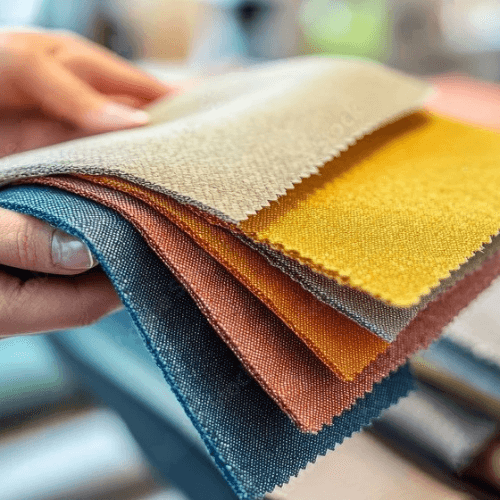How to Source High-Quality Fabrics for Export: A Step-by-Step Guide

Sourcing high-quality fabrics for export is a critical process for textile entrepreneurs looking to succeed in the global market. The right fabric can make a significant difference in product quality, customer satisfaction, and overall business success. This guide outlines a step-by-step approach to effectively source high-quality fabrics, ensuring that your export operations are efficient and profitable.
### Step 1: Research and Identify Suppliers
The first step in sourcing high-quality fabrics is to conduct thorough research to identify potential suppliers. Here’s how to get started:
– **Online Directories and Marketplaces:** Utilize online platforms such as Alibaba, Global Sources, or Textile World to find reputable fabric suppliers. These platforms provide access to a wide range of manufacturers and wholesalers.
– **Trade Shows:** Attend textile trade shows and exhibitions such as the Canton Fair or Texworld. These events allow you to meet suppliers in person, view their products, and establish relationships.
– **Referrals and Recommendations:** Seek recommendations from industry peers or business networks. Referrals can lead you to reliable suppliers with proven track records.
### Step 2: Evaluate Supplier Capabilities
Once you have identified potential suppliers, it’s essential to evaluate their capabilities:
– **Quality Assurance:** Inquire about the supplier’s quality control processes. Ensure they adhere to industry standards and certifications (e.g., ISO, Oeko-Tex) that guarantee fabric quality.
– **Production Capacity:** Assess whether the supplier can meet your volume requirements within your desired timelines. Understanding their production capabilities is crucial for timely deliveries.
– **Specialization:** Look for suppliers who specialize in the types of fabrics you need (e.g., cotton, polyester, silk). Specialized manufacturers often have better expertise and quality control measures in place.
### Step 3: Request Samples
Before committing to a supplier, request fabric samples to evaluate their quality firsthand:
– **Test Samples:** Order samples of different fabric types and qualities. Inspect them for texture, durability, colorfastness, and overall appearance.
– **Comparative Analysis:** Compare samples from different suppliers to determine which meets your quality standards and aligns with your design requirements.
### Step 4: Establish Communication
Effective communication is key to successful fabric sourcing:
– **Clear Specifications:** Clearly communicate your fabric specifications, including desired materials, colors, patterns, and quantities. Providing detailed information helps prevent misunderstandings.
– **Regular Updates:** Maintain open lines of communication throughout the sourcing process. Regular updates on production schedules and potential delays ensure transparency.
### Step 5: Negotiate Terms and Pricing
Negotiating favorable terms with your chosen supplier is crucial for maintaining profitability:
– **Minimum Order Quantities (MOQ):** Discuss MOQs with suppliers. Some may have higher minimums that could affect your cash flow if you’re just starting out.
– **Pricing Structure:** Negotiate pricing based on order volume and payment terms. Ensure that the pricing aligns with your budget while considering quality.
– **Shipping Costs:** Discuss shipping options and costs upfront. Understanding logistics will help you calculate total expenses accurately.
### Step 6: Quality Control Measures
Implementing quality control measures is essential to ensure that the fabrics received meet your standards:
– **Inspection Protocols:** Establish inspection protocols for incoming shipments. This may involve checking for defects, color discrepancies, or inconsistencies in fabric weight.
– **Third-Party Inspections:** Consider hiring third-party inspection services if you’re sourcing from overseas. These agencies can conduct thorough inspections before shipment to ensure compliance with your specifications.
### Step 7: Build Strong Supplier Relationships
Developing strong relationships with your suppliers can lead to better collaboration and improved outcomes:
– **Trust and Reliability:** Foster trust by maintaining open communication and honoring agreements. Reliable partnerships often yield better service and flexibility during peak seasons.
– **Feedback Loop:** Provide constructive feedback on fabric quality and service. This helps suppliers understand your needs better and encourages continuous improvement.
### Step 8: Stay Updated on Industry Trends
The textile industry is constantly evolving; staying informed about trends can enhance your sourcing strategy:
– **Follow Industry Publications:** Subscribe to industry publications or newsletters that cover fabric innovations, sustainability initiatives, and market developments.
– **Networking Opportunities:** Engage with industry associations or attend conferences to network with other professionals who can share insights into sourcing trends.
### Conclusion
Sourcing high-quality fabrics for export requires careful planning, research, and relationship management. By following this step-by-step guide—researching suppliers, evaluating capabilities, requesting samples, establishing communication, negotiating terms, implementing quality control measures, building relationships, and staying updated on trends—you can effectively navigate the complexities of fabric sourcing.
With dedication and attention to detail, you can ensure that your textile exports meet market demands while maintaining high standards of quality. This proactive approach will not only enhance your product offerings but also contribute positively to the growth of your business in the competitive global textile market.






